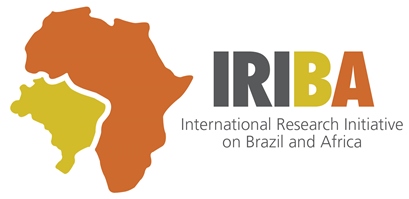This morning in the Guardian, IRIBA co-research director Ed Amann gives his take on the anti-poverty agenda facing Brazil’s presidential candidates.
This is a year of important anniversaries for Brazil. It is 10 years since the launch of the celebrated Bolsa Família anti-poverty plan and 20 years since the launch of the Brazilian real currency, a critical step on the path to economic stability. This month’s elections mark the 20th anniversary of the election of President Fernando Henrique Cardoso, a key architect of the real and instigator of predecessor programmes to the bolsa.
As the electorate goes to the polls, voters may feel cause for satisfaction. Over the past two decades the incidence of poverty has fallen, income distribution has become less skewed and Brazil has managed to combine reasonable growth with single-digit inflation. Yet many fear these achievements may not be sustained. This has undermined support for the presidential incumbent, Dilma Rousseff, who now faces a closely fought runoff against the centre-right candidate, Aécio Neves.
After comparatively strong growth in the early part of this decade, the Brazilian economy has entered a slump. The Central Bank now predicts GDP growth of only 0.7% this year. What’s more, the rapid pace of social and economic reform of the 1990s and 2000s has slowed under the Rousseff administration.
The elections therefore come at a crucial moment in the country’s battle to achieve more inclusive growth and to drive down poverty. Can the momentum be regained?
This question has no easy answers but a key starting point, as our research makes clear, is to recognise that the factors which have driven poverty down stretch well beyond Bolsa Família. They comprise an effective social contract (which provides political underpinning for difficult reforms); robust institutions and frameworks for counter-inflationary macroeconomic management (developed in the early years of the real); and effective, targeted social policies (including, but not limited to, the bolsa).
Supporting these elements was a favourable external economic environment in which foreign capital was abundant (and cheap) and commodity exports were healthy (and expensive). Across most of these dimensions, the horizon is undoubtedly darker today than it was even three years ago. It should not be beyond the ability of the next president to navigate these choppier waters, but the issues below must be addressed.
Consensus for reform
The achievement of consensus inside and outside Congress to push through difficult reforms was a hallmark of the successful real stabilisation plan in the 1990s. Yet, it is proving harder to build such a consensus today, certainly among the political elite. The case of long-delayed (and much-needed) fiscal reform is a telling example.
While it may be argued that Neves has a greater appetite than Rousseff for critical structural reforms (in areas such as tax and social security), he would still have to contend with powerful inertial forces. During the 1990s, a sense of crisis proved sufficient to galvanise politicians and society at large behind economic stabilisation. The current absence of crisis makes such a trick harder, but not impossible, to pull off today.
Effective macroeconomic management
The counter-inflationary framework developed during the 1990s and early 2000s remains in place. It is unlikely to be seriously amended, no matter who wins the election. Although effective at restraining prices to single digits (inflation is forecast to end the year at 6.3%), the high interest rates check economic growth. This has consequences for the speed at which poverty can be tackled and represents a real challenge in the short to medium term.
Targeted social policies
The most high-profile aspect of Brazil’s successful attempt to drive down poverty has been targeted social policies, among them the Bolsa Família. Their popularity ensures they face little chance of being rolled back, regardless of whether Rousseff or Neves is elected. In fact, many on the left and centre grounds of Brazilian politics would like to see their scope extended, with more emphasis given to improving access to quality education and public health services.
The objective is to endow poorer groups with the skills they need to break intergenerational cycles of deprivation. Whether such ambitions can be soon realised is open to doubt. In the absence of meaningful fiscal reform and with faltering growth, the financial scope for expansion is very limited.
The external environment
Future prospects for inclusive growth partly lie outside Brazil’s control. The state of the global economy will have a critical influence on the speed at which the domestic economy grows. The unwinding of quantitative easing and softening commodity prices will make it harder for Brazil to export and draw in investment. This will dampen growth prospects and further limit the fiscal space for spending on social programmes.
It is clear that the next administration will face serious challenges if it is to build on the accomplishments of recent years. However, Brazil is assuredly not in crisis. The popular clamour for progressive reform and social justice is also louder than ever. Opportunities for positive change exist, but it will take determination and persistence to seize them.
